

Gautam Sharma
5 Months Ago

Contributor
The updated Porsche 911 looks set to drop its analogue rev counter.
The 992.2-generation 911 has been snapped testing multiple times in recent months, wearing modified front and rear bumpers on the outside.
Recent images of the cabin reveal the 911 looks set to gain the fully-digital dials from the Taycan electric car.
The current model features a prominent rev counter in front of the driver, flanked by two screens which can be customised individually.
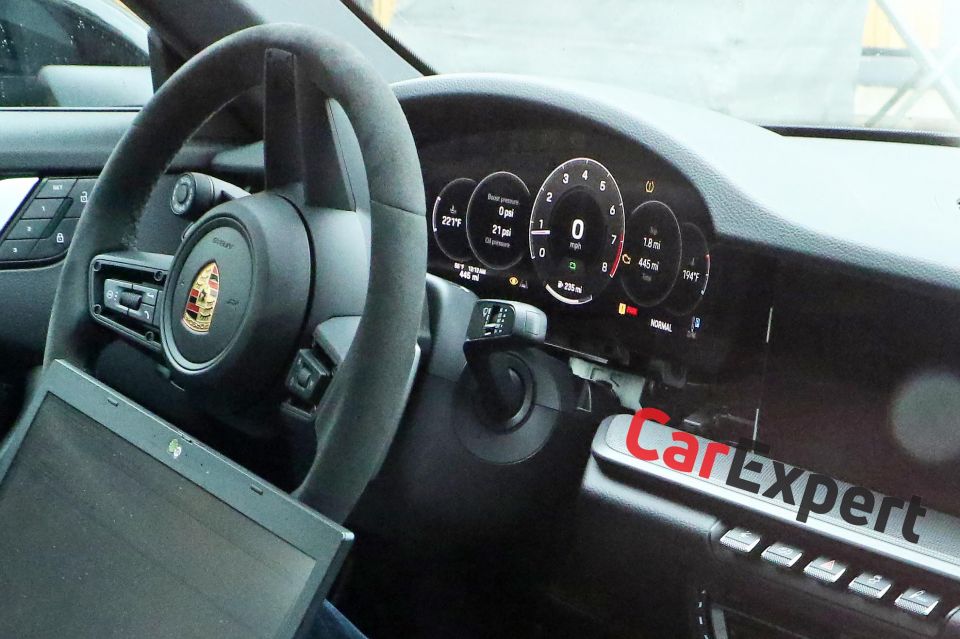
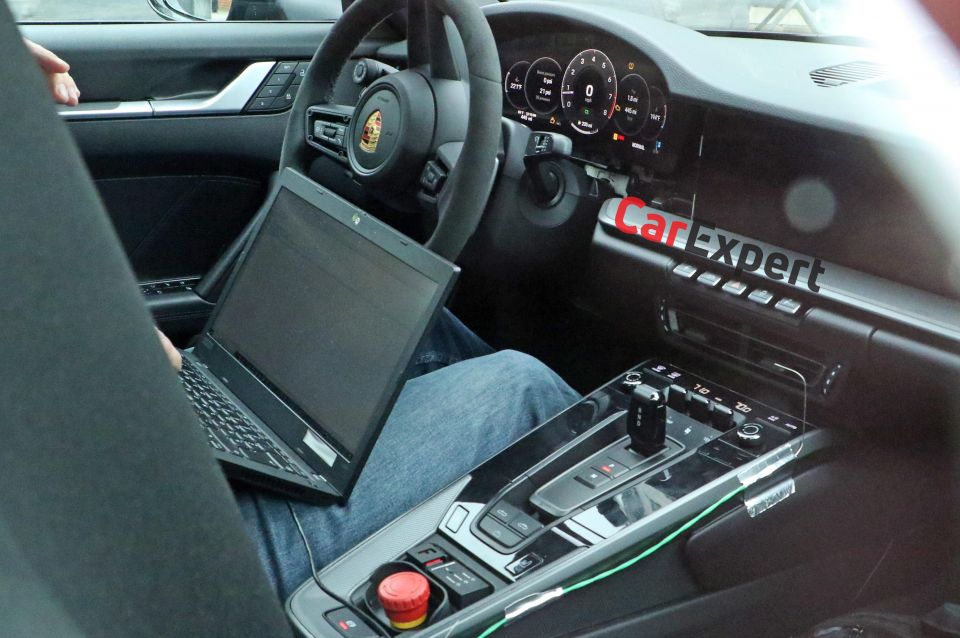
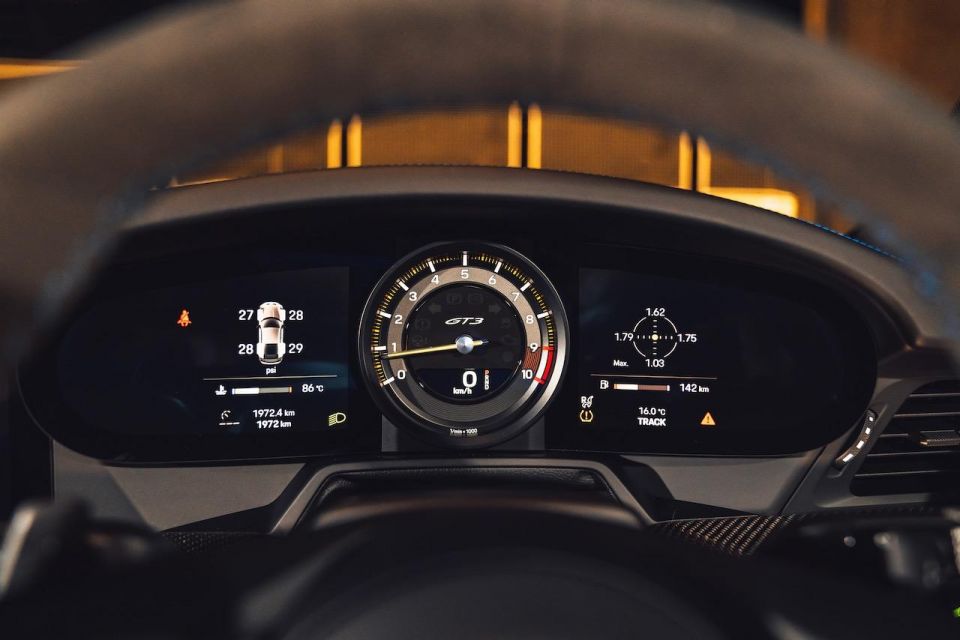
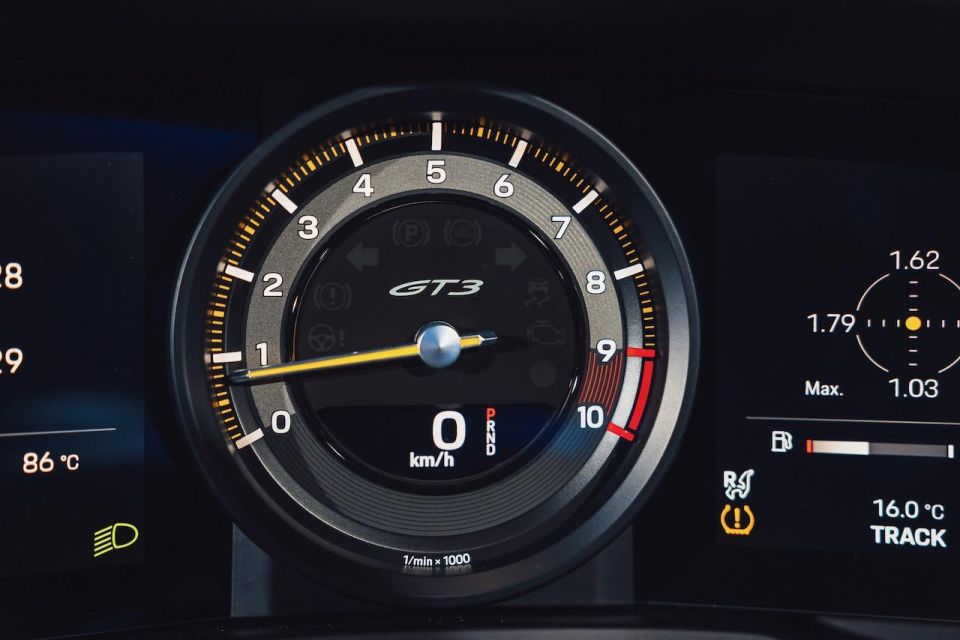
As for the rest of the changes? The rumour mill is swirling regarding the 911’s engine, with some reports claiming it could gain the 4.0-litre naturally-aspirated flat six from the Cayman GTS and GT4 with its mid-life update.
But asked if the 4.0 from the 718 GTS range will end up in the 911, Frank-Steffen Walliser, board member responsible for the 911 and 718, simply told us “no”.
The engine in question shares its displacement with the engine in the 911 GT3 and Cayman GT4 RS, but is actually a unique unit developed specifically for the 718 GTS and GT4.
Given the cost of developing and homologating an engine, it’s rare for brands to create a bespoke unit for a single, relatively low-volume model range.
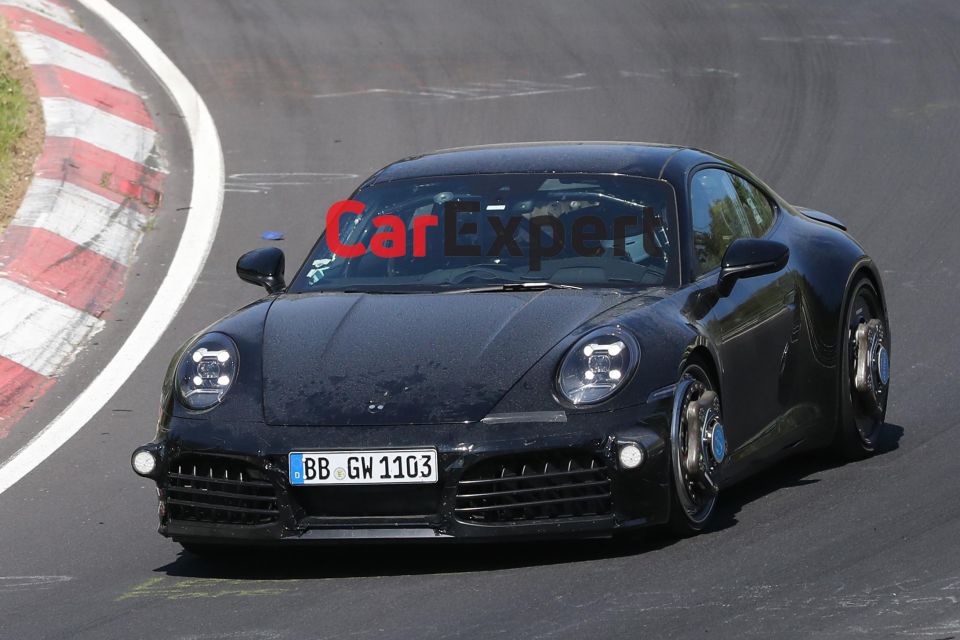
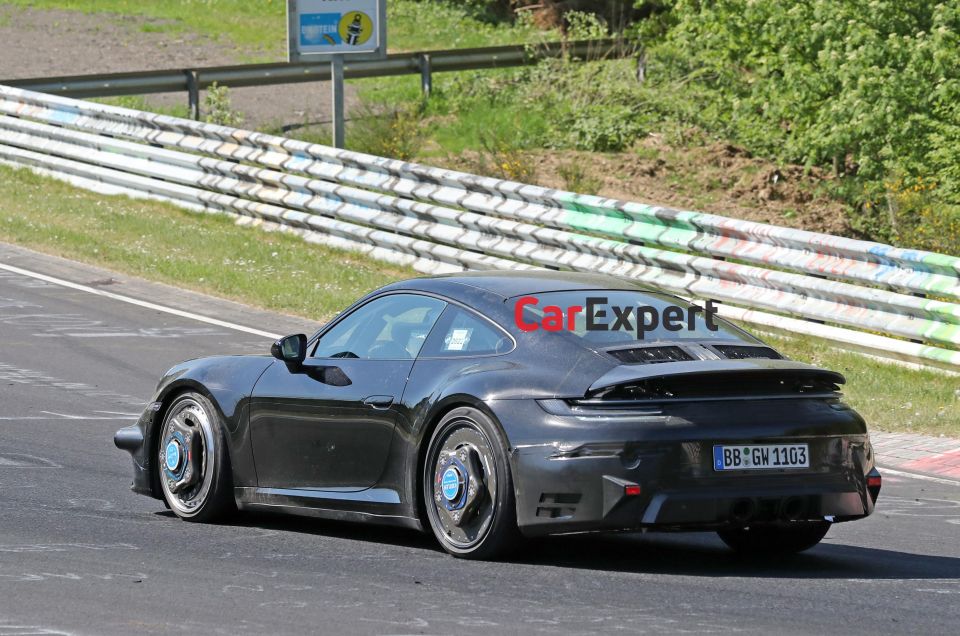

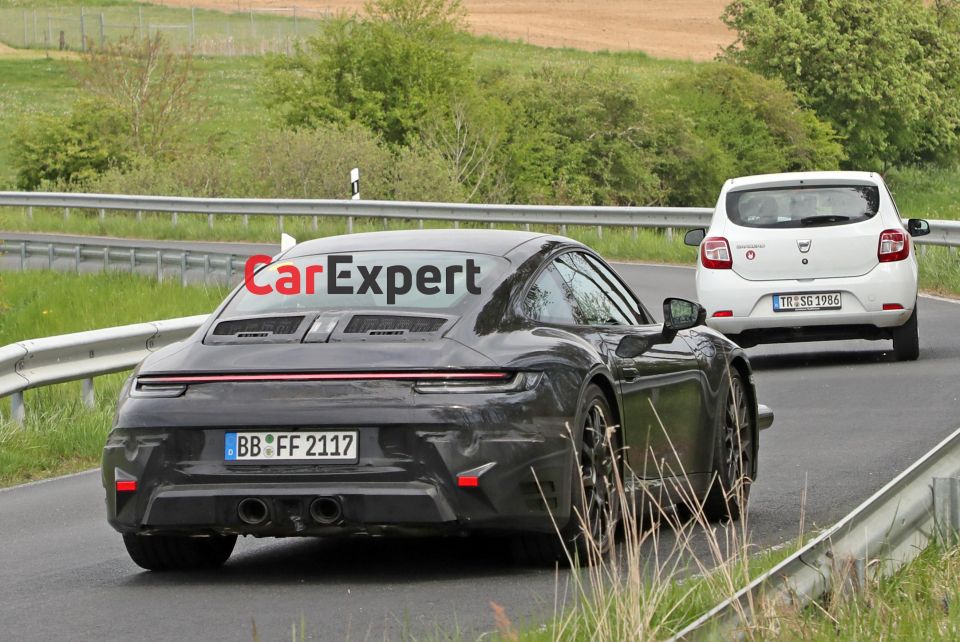
Although Mr Walliser didn’t give too much away, he suggested the engine was meant to be used more broadly when development started in 2014, before rapidly-changing emissions regulations forced Porsche to change its plans.
“Knowing everything I know today, maybe we would have done something different,” Mr Walliser said.
“It was not a wrong decision, you can’t go back. The engine is a marvel, the 4.0-litre in the GTS. Customer response was over-the-moon, it really gave a second life to Boxster and Cayman,” he said.
“Things have changed, other plans have changed,” Mr Walliser said. “It will stay the single engine, the single car – a very collectible car.”

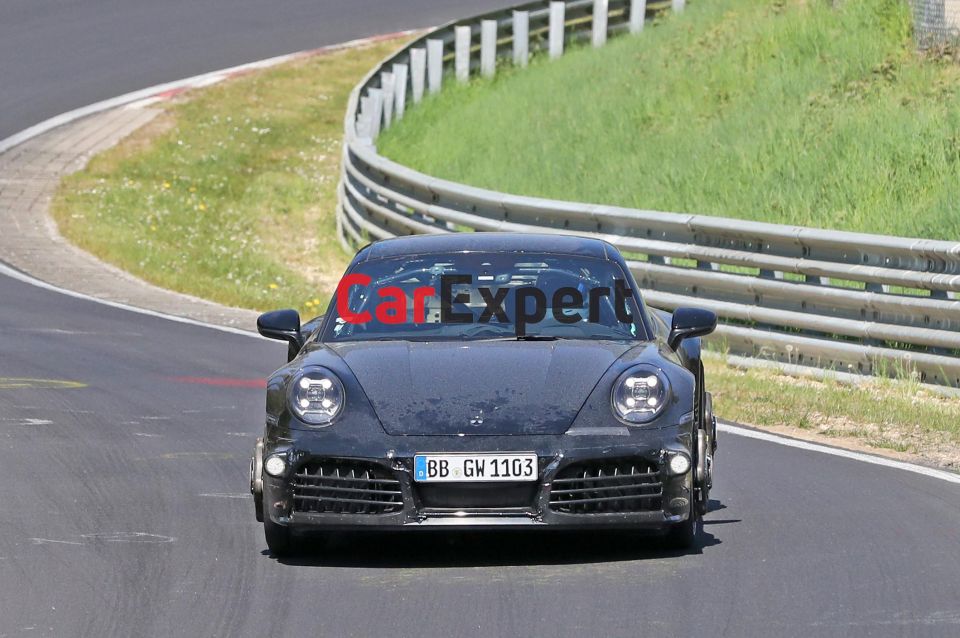
Although one of the cars pictured here features a different exhaust arrangement to the current model, suggesting it could have a different engine, the digital dash shows a turbo boost gauge.
Although naturally-aspirated power isn’t on the menu, we know hybrid power is coming to the 911.
It’s unlikely to feature PHEV power, and is instead likely to take inspiration from the powertrain in the 919 endurance racer, using electric power to assist rather than over-shadow the petrol engine.
Packaging a PHEV drivetrain in the 911 is more difficult than in the larger Panamera and Cayenne, given it’s still a relatively compact car and is still overtly focused on driver engagement.
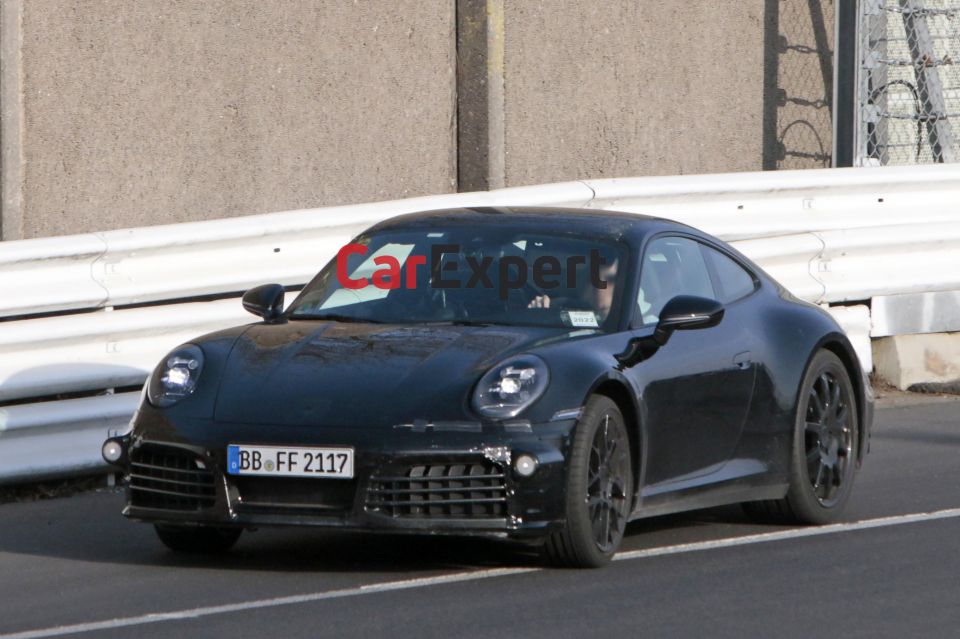
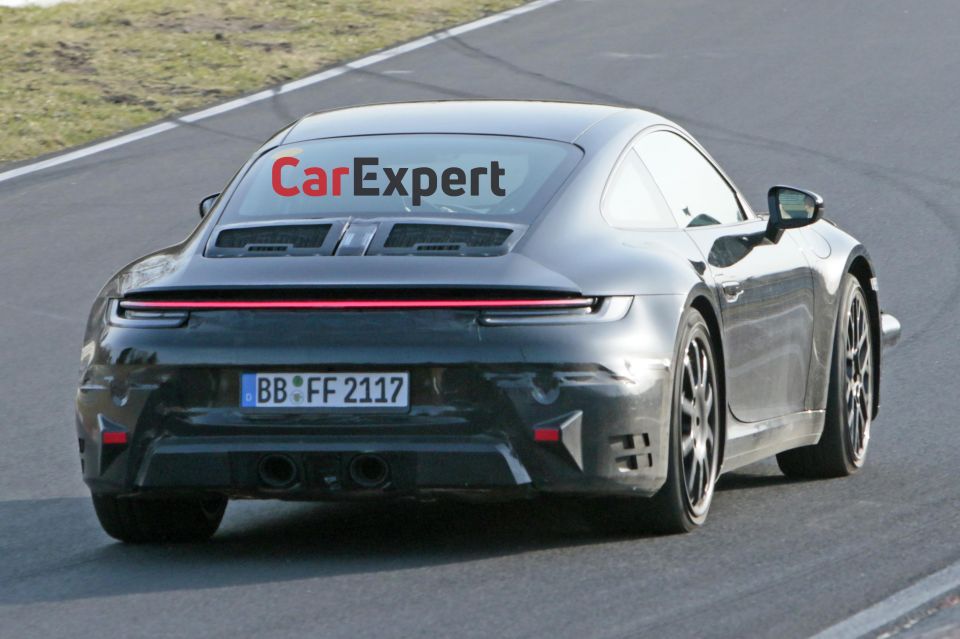
Mr Walliser has previously told CarExpert the move to hybrid power “could come step-by-step” as Porsche works to meet the next batch of European emissions rules expected to hit in 2026.
That suggests the first move could be to a 48V mild-hybrid system, which allows the engine to switch off at low speeds and provides a power boost when you get a move on.
Mr Walliser says the first challenge is working out how much of a boost any hybrid system would provide to the petrol engine in a 911.
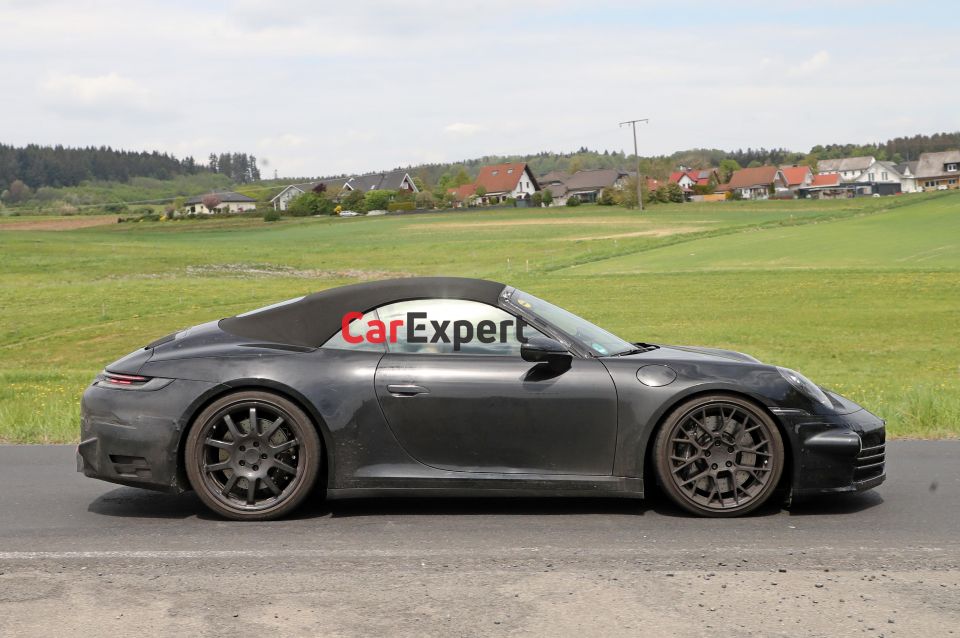
“The question is: With the hybridisation, what is the right level? How much power do you put in?,” Mr Walliser asked.
“This is also not solved. In the automotive industry we see different solutions, and we will see what our solution will be. Hybridisation in general is something we are considering,” he said.
MORE: Everything Porsche 911
Take advantage of Australia's BIGGEST new car website to find a great deal on a Porsche 911.
Scott Collie is an automotive journalist based in Melbourne, Australia. Scott studied journalism at RMIT University and, after a lifelong obsession with everything automotive, started covering the car industry shortly afterwards. He has a passion for travel, and is an avid Melbourne Demons supporter.


Gautam Sharma
5 Months Ago
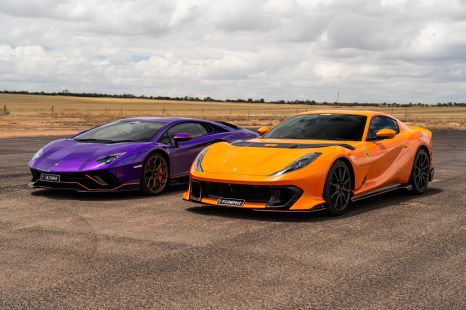

Paul Maric
5 Months Ago
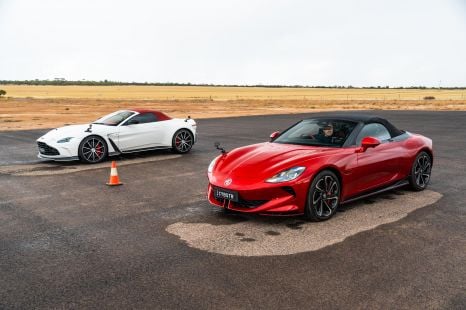

Paul Maric
5 Months Ago
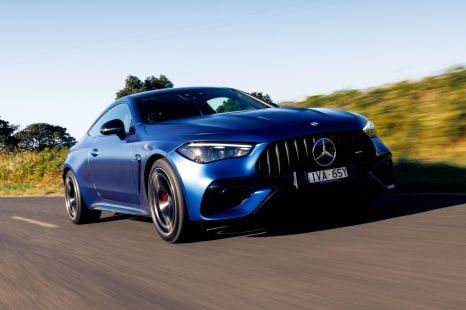

Josh Nevett
4 Months Ago
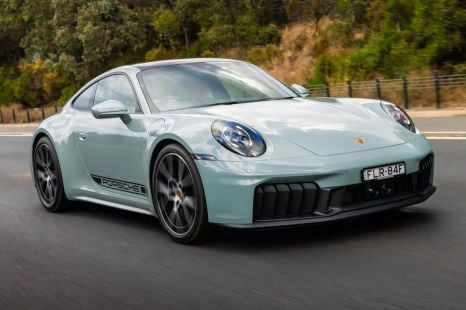

Alborz Fallah
3 Months Ago
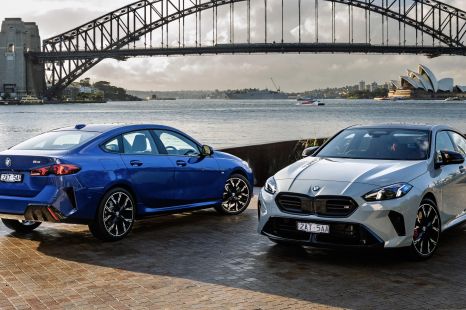

Max Davies
2 Months Ago